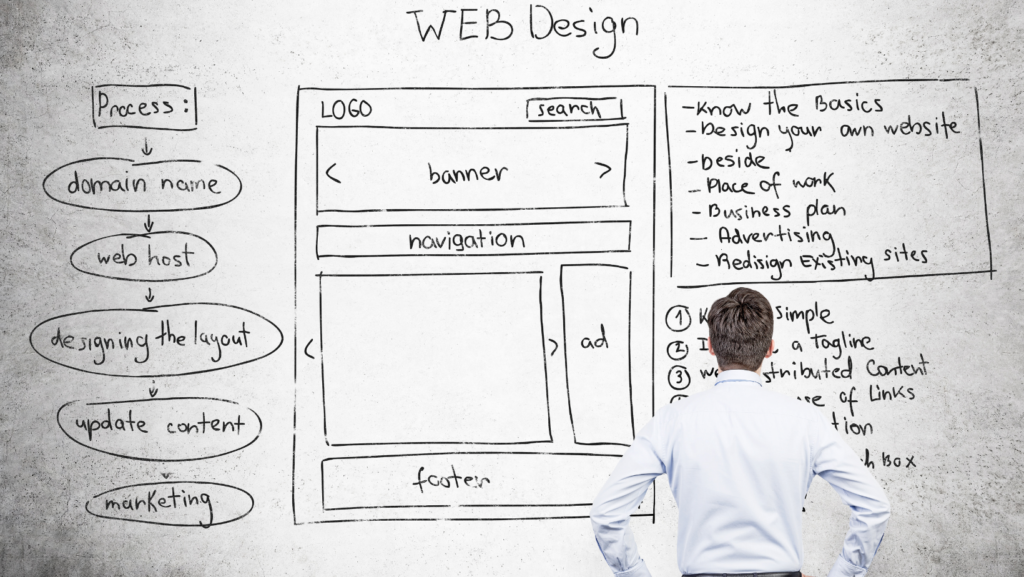In the digital age, web design marketing has emerged as a crucial strategy for businesses worldwide. It’s not just about having an online presence anymore; it’s about making that presence work effectively for your brand. This article dives into the fascinating world of web design marketing, exploring its significance and how it can propel a business towards success.
Whether you’re a seasoned marketer or a startup owner looking to make your mark, understanding web design marketing can be a game-changer. From enhancing user experience to boosting search engine rankings, good web design is more than meets the eye. Join us as we unravel the character and intricacies of this dynamic field, equipping you with knowledge to navigate the digital landscape with confidence.
Web Design Marketing
The efficiency of web design marketing lies in its capability to visually communicate a brand’s persona and values. Indeed, savvy marketers aptly utilize web design, transforming it into a significant tool within their marketing arsenal.
How Design Influences User Perception

The design of a website greatly impacts a user’s perception. A clean, sleek, and professional layout sends a positive impression, inducing trust. Contrarily, an untidy and cluttered layout can raise red flags for users, hampering their trust.
For instance, research from Stanford reveals that 75% of users judge a company’s credibility based on their website design. This fact asserts that design isn’t just about aesthetics; it’s a critical tool for establishing credibility and trust among prospective customers.
Core Elements of Effective Web Design Marketing
Effective web design marketing doesn’t merely revolve around having a visually appealing site. Two integral components lay at its heart – visual aesthetics combined with user experience, and the incorporation of mobile responsiveness and SEO.
Visual Aesthetics and User Experience
Visual aesthetics significantly contributes to effective web design marketing. It’s the initial encounter between a visitor and a website. Website design professionals leverage their expertise in color theories, font selection, and layout creation to cultivate a site’s distinct identity. For instance, a minimalist design approach, employing primary colors and clear fonts, often resonates with tech startups, while luxury brands may prefer using darker colors with ornamental fonts for an air of sophistication.
Mobile Responsiveness and SEO

Steadfast in its importance, mobile responsiveness remains a core asset in effective web design marketing. A majority of web traffic emerges from mobile devices; hence, websites that don’t employ a mobile-friendly design risk losing potential customers. Such websites test the patience of users who, in the end, might desert a site for its mobile-friendly competitor.
Similarly, SEO also takes center stage in web design marketing. Bits of coding, meta tags, keyword usage, and sitemaps positively impact a website’s visibility on search engines.
Strategic Integration of Web Design in Marketing Campaigns
Aligning Design With Brand Identity
A core aspect of successfully integrating web design into marketing efforts involves aligning the design with the brand identity. Far beyond the mere creation of a logo or choice of colors, brand identity encompasses the entire emotional and psychological relationship between a company and its customers. For instance, Scandinavian brands may lean towards minimalistic designs, reflecting their brand philosophy of simplicity and functionality.
Utilizing Design to Improve Conversion Rates

In addition to aligning design with brand identity, web design also has a significant impact on conversion rates. The Optical Retailer Warby Parker, for instance, increased the online sales of their glasses by 20% merely by making the button on their homepage more visible.
A well-thought-out, strategically planned web design does more than peak a viewer’s interest—it guides them towards a desired action, whether that’s signing up for a newsletter, requesting a quote, or making a purchase. Using elements like clear call-to-actions (CTAs), strategically placed contact forms, and design aspects that emphasize selling points, can greatly aid in increasing conversion rates.
Mastering Web Design Marketing
Mastering web design marketing isn’t just about creating an appealing website. It’s about leveraging visual aesthetics, user experience, mobile responsiveness, and SEO to engage users and boost conversion rates. Aligning web design with brand identity strengthens marketing strategies and enhances credibility. Emerging technologies like AI and VR are game-changers, offering personalized customer experiences and immersive interfaces.

